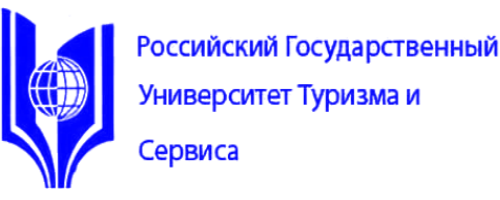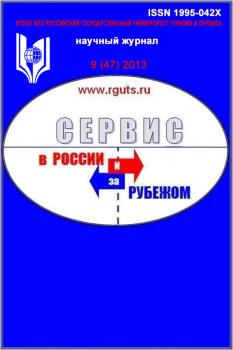Moskva, Moscow, Russian Federation
Moskva, Russian Federation
In managing the recreational resources in a coastal zone of the Crimean peninsula it is necessary to consider geomorphological natural risks that become visible in so-called adverse and dangerous natural processes. Among all types of adverse and dangerous natural processes in a coastal zone of Crimea the geological and geomorphological types are the greatest threat for the recreational natural-use. They are the object of studying in this article, and their impact on recreational human activity is a subject. This research is aimed at identifying the geomorphological adverse and dangerous natural processes, the characteristics of a coastal zone of the Southern Crimea, and developing the recommendations for managing the recreational natural-use. The authors assess the risks on that side using the town of Solnechnogorskoye and its surroundings, the typical tourist center of eastern part of the Southern Crimean coast, as a key area of the recreational activity. The slope and abrasion processes are the greatest threat here. Abrasion in general is characterized by the average level of intensity, the slope processes are mostly shown as a linear erosion and a landslide activity. A considerable part of this territory represents the modern and ancient landslides that in certain cases are activated by the human impact. The forecast for the coast dynamics indicates the necessity of shore protection works for a long-term vision to protect the engineering objects located next to the sea coast. It is necessary to avoid capital construction within the landslide bodies and next to the sea coast without bank protection con- structions. Protective measures should be applied to the available engineering constructions that are affected by the landslides and the linear erosion. It willallow reducing financial losses and the probability of human losses (that will inevitably lead to a sudden outflow of recreants from the region) when using the territory for tourism. The chosen area is characterized by adverse and dangerous natural processes typical for Crimea and other seaside territories with a mountainous terrain. Thus, the gained experience can be used for other coastal areas in Crimea and beyond.
Crimea, tourism, key area, the town of Solnechnogorskoye, coastal zone, geomorphological risks, abrasion, landslides, recreational infrastructure, mathematical modeling
1. Bagrova L.A., Bokov V.A., Bagrov V.A. Geografiya Kryma. K.: Libyd', 2001. 304 s.
2. Gidrometeorologicheskie usloviya morey Ukrainy. T. 2: Chernoe more / Il'in Yu.P., Repe- tin L.N., Belokopytov V.N., Goryachkin Yu.N., D'yakov N.N., Kubryakov A.A., Stanichnyy S.V. Se- vastopol': MChS i NAN Ukrainy, 2012. 421 s.
3. Goryachkin Yu.N., Ivanov V.A. Uroven' Chernogo morya: proshloe, nastoyaschee i buduschee. Sevastopol', 2006. 210 s.
4. Dolotov V.V., Ivanov V.A. Povyshenie rekreacionnogo potenciala Ukrainy: kadastrovaya ocenka plyazhey Kryma. Sevastopol', 2007. 150 s.
5. Ignatov E.I, Orlova M.S., Sanin A.Yu. Beregovye morfosistemy Kryma. Sevastopol': NPC «EKOSI-Gidrofizika», 2014. 267 s.
6. Inzhenernaya geologiya SSSR. T.8. Kavkaz, Krym, Karpaty. M.: Izd-vo MGU, 1976.365 s.
7. Klyukin A.A. Ekzogeodinamika Kryma. Simferopol', 2007. 320 s.
8. Kuz'min S.B. Opasnye geomorfologicheskie processy i risk prirodopol'zovaniya. Novo- sibirsk: Izd-vo «GEO», 2009. 195 s.
9. Resursy poverhnostnyh vod SSSR. T.6. Ukraina i Moldaviya. Vyp. 4. Krym. L.: GMI. 1966. 344 s.
10. Romanyuk O.S. Izuchenie inzhenerno-geologicheskih usloviy beregovoy zony yuga i zapada Krymskogo poluostrova. Otchet Kerchenskoy partii o rezul'tatah rabot v 1985-1986 gg. Kniga 5. Kadastr nadvodnoy chasti beregov Kryma. Simferopol'. 1989. 142 s.
11. Bolkunov I.A. Razvitie turizma v Krymu: analiz aktual'nyh ugroz i putey ih snizheniya // Tavricheskiy nauchnyy obozrevatel'. 2016. №3(8). S. 1-6.
12. Rukovodstvo po metodam issledovaniy i raschetov peremescheniya nanosov i dinamiki be- regov pri inzhenernyh izyskaniyah. M.: Moskovskoe otdelenie Gidrometeoizdata, 1975. 244 s.
13. Sovremennoe sostoyanie beregovoy zony Kryma / Pod red. Yu.N. Goryachkina. Sevastopol': EKOSI-Gidrofizika, 2015. 252 s.
14. Slepokurov A.S. Geoekologicheskie i innovacionnye aspekty razvitiya turizma v Krymu. Simferopol': SONAT, 2000. 100 s.
15. Chernyavaya A.L. Analiz sovremennogo sostoyaniya sel'skogo zelenogo turizma v AR Krym // Ekonomicheskiy vestnik Donbassa. 2012. №1(27). S. 63-66.
16. Shostka V.I. Perspektivy razvitiya sel'skogo zelenogo, ekologicheskogo i etnografichesko- go vidov turima v Krymu // Sovremennye problemy servisa i turizma. 2015. T.9. №1. S. 96-101.
17. Barkin D. Ecotourism for sustainable regional development // Current Issues in Tourism. 2002. Vol. 5(3-4). Pp. 245-253.
18. Higgins B.R. The Global Structure of the Nature Tourism Industry: Ecotourists, Tour Operators and Local Businesses // Journal of Tourism Research. 1998. Vol. 7(3). Pp. 20-39.
19. Hunt C.A., Durham W.H., Driscoll L., Honey M. (2015-03-16). Can ecotourism deliver real economic, social, and environmental benefits? A study of the Osa Peninsula, Costa Rica // Journal of Sustainable Tourism. 2015. Vol. 23. Iss. 3. Pp. 339-357. doi:https://doi.org/10.1080/09669582.2014.965176.
20. Isaacs J.C. The limited potential of ecotourism to contribute to wildlife conservation. The Ecologist. 2000. Vol. 28(1). Pp. 61-69.





